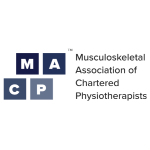A person-centred framework: is this the way forward for manual therapy?
)
Empowering patients during their rehabilitation journey is always something a therapist will aim to do, but how can you move towards a place where person-centred care the key contributor to this?
Whilst person-centred care has gained traction in musculoskeletal pain management in recent years, its integration into a manual therapy management plan remains largely unexplored. The article below provides an exploratory clinical commentary highlighting how manual therapy can be employed using an evidence-based, person-centred method. Rather than opposing traditional or historic manual therapy approaches, the proposed framework instead enriches them by integrating contemporary insights into application and assessment. It also considers the underlying mechanisms affecting responses and the range of unique biopsychosocial factors that shape patient outcomes. The article aims to encourage the advancement of manual therapy towards contemporary evidence-based practices, aiding its continued use within the sector.
What is person-centred care?
Person-centred care prioritises the patient by placing them at the heart of both assessment and treatment planning. This approach acknowledges the biological, psychological, and social factors influencing the patient's condition. It emphasises shared decision-making between patient and therapist to develop a realistic, person-focused care plan, extending the planning process above and beyond the clinical visit.
Traditionally, manual therapy has been characterised by a practitioner-led treatment approach, with the practitioner determining and applying techniques. However, recent developments in sector literature and training increasingly point towards the effectiveness of a person-centred care style.
While factors from other tiers of evidence-based practice, such as clinician experience and existing research, should inform the decision-making process, they should not overshadow the importance of the patient's individual needs and expectations. Evaluating and understanding patient expectations is a crucial element of a person-centred approach.
Why is it beneficial?
A person-centred approach aims to empower the patient in their individual rehabilitation journey above all else. Factors that should be taken into account include expectations, past experiences, mental health, external support etc. By taking into account the factors potentially impacting a patient’s progress, a practitioner can prepare for any specific eventualities that may arise, ensuring the planning provided is not only highly individualised but also adaptable and flexible. The consideration of these factors will contribute to a more focused assessment in allowing practitioners to explore the potential for contextual factors contributing to the patient’s issues above and beyond a mechanical fault.
It has also been suggested that person-centred approaches help to share onus of issues such as chronic pain between the practitioner and the patient, increasing personal autonomy and leading to longer-term independence.
Read the full research report here: https://www.jospt.org/doi/pdf/10.2519/josptopen.2023.0812


.png)
.png)











.png)




